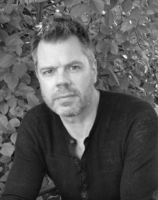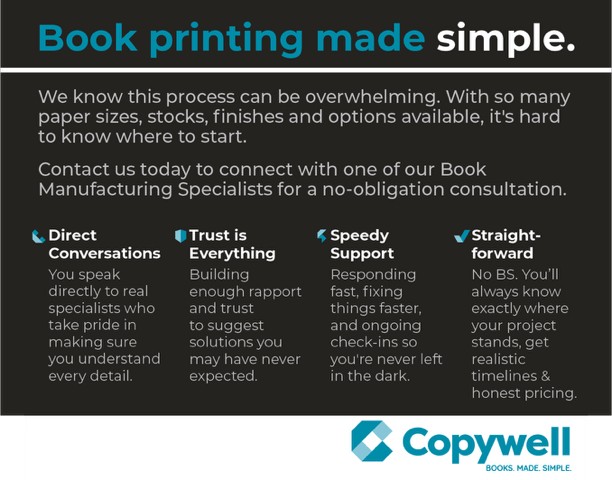Best Canadian Stories Editor Russell Smith on Short Fiction & the Importance of Variety
For more than 45 years, the most interesting, innovative, and memorable short stories of the year have been collected in Best Canadian Stories, with a list of past contributors that includes the likes of Mavis Gallant, Alice Munro, Rohinton Mistry, and Margaret Atwood.
This year's edition (the 48th!) has found a perfectly suited guest editor in Giller Prize-nominated short fiction author, novelist, columnist, and writing teacher Russell Smith.
Smith's Best Canadian Stories 2018 (Bibloasis) combines both emerging and established voices for a fascinating glimpse at the most exciting short fiction coming out of this country. The collection includes stories from an impressive list of writers: Shashi Bhat, Tom Thor Buchanan, Lynn Coady, Deirdre Simon Dore, Alicia Elliott, Bill Gaston, Liz Harmer, Brad Hartle, David Huebert, Reg Johanson, Amy Jones, Michael LaPointe, Stephen Marche, Lisa Moore, Kathy Page, and Alex Pugsley.
We had the opportunity to speak with Russell about the daunting process of assembling the collection. We're excited to share his experiences and advice here today, including the high and low points of reading very nearly every short story published in Canada over an 18 month period, the reason why a variety of tones is important in an anthology, and the similarities between building a house and constructing a story.
Open Book:
Tell us about you’re the new book and how you became involved with it.
Russell Smith:
Best Canadian Stories is a series that has been going for 47 years. John Metcalf – my first editor and literary mentor – had been compiling it for I think 18 of those. He has decided to take a well-deserved rest from it, and the publisher, Biblioasis, will be choosing a different guest-editor every year from now on, and they asked me to be the first new one. I have published two books of short stories myself and I love the genre.
OB:
How did you select the pieces for this book? What were you looking for when assembling it?
RS:
I did my best to read every piece of short fiction published in a journal – either online or in print – in 2017 or the first half of 2018. Biblioasis gathered the print journals and sent them to me in a convoy of huge boxes. I found the online ones myself. (I may have missed some of the very obscure online ones. I didn’t have an assistant in this.) I also read Canadians who had published fiction in foreign magazines that year – in Wired, Granta and the Atlantic, for example – and I read all the writers who were shortlisted for short-fiction awards such as the Journey Prize or the Canadian Magazine Awards for Fiction. I also solicited unpublished pieces from writers I admired, and I put out a call for submissions on social media. I read solidly for several months. I was looking for excitement in writing style, for wit and playfulness, for unexpected insights, and for gripping what-will-happen-next stories. I wanted to represent the great diversity of form and setting in Canadian fiction – I didn’t want a bunch of stories that all resembled my own writing or that all fit a conventional mould.
OB:
How do you view the pieces in the book as speaking to each other?
RS:
They are extremely varied. The settings range from classrooms to a fish farm to an indigenous reserve to post-war England to another planet to a human stomach. The styles range from voluble and rambling to minimalist. One story is in emails; one was written with the assistance of sophisticated artificial intelligence. I aimed to represent the diversity of formal play going on.
Your CanLit News
Subscribe to Open Book’s newsletter to get local book events, literary content, writing tips, and more in your inbox
OB:
What do you need when you're writing and editing – in terms of space, food, rituals, writing instruments?
RS:
I did most of the reading in the High Park/Roncesvalles library in Toronto, which is a lot more genteel than my own local library (Parkdale). Really all I need to work is an absence of shrieking paranoiacs. I love Parkdale but a shelter for the mentally ill is not the best workspace.
When I write I sit hunched over my computer in my tiny study crammed with books and papers and my son’s elaborate soccer diagrams and team lists. It is quite infernal. I drink a lot of coffee and I listen to repetitive, wordless electronic music. I shout a lot to myself, often offensively. I can’t have roommates.
OB:
What do you do if you're feeling discouraged during the writing and editing process? Do you have a method of coping with the difficult points in your projects?
RS:
There were moments, after reading several identical Canadian stories in a row – stories often set in kitchens in small towns or suburbs or farms, in which people looked out at the snow and felt too daunted to go on – when I admit to feeling disheartened myself. I would simply have to do something else for a while. Tight deadlines, though, are a great antidote to this malaise.
When I am writing my own fiction I often find that I blast through a first draft with élan and then I stall when it comes to fixing the flaws that I then find on re-reading it. It just seems exhausting to re-enter it. This is the most dangerous point – the point at which one is most in danger of abandoning the project. I admit to letting months go by before attempting a second draft.
When I do that I start by writing a document titled "Builder’s Deficiencies" in which I list all the flaws with the narrative. It usually consists of a number of things that must be added – just like the list one presents to the builders when buying a new condo. Then I just go through them systematically.
OB:
What defines a great collection or anthology, in your opinion? Were there anthologies you looked to for inspiration in curating this project?
RS:
A great anthology does not have a sameness of tone. Every new piece should be surprising. I love old mildewed high-school short story anthologies with titles like Fifty Great Short Stories -- with a Poe story and a Maupassant and a Chekhov, and The Lottery and Hills Like White Elephants and Bartleby the Scrivener and all those chestnuts (and maybe a John Barth and a Donald Barthelme for modernity). I love comparing the styles of the different eras.
OB:
What are you working on next?
RS:
I am working on a screenplay about campus sexual politics. I have a pornographic s/m thriller novel written under a pseudonym that I am currently shopping around. It is Fifty Shades of Grey meets Girl With The Dragon Tattoo. I will not be around for interviews when that one comes out.
_______________________________________
Russell Smith is the author of seven works of fiction. A well-know journalist and cultural commentator, he has been a CBC radio host and remains a Globe & Mail columnist. He lives and writes in Toronto.





